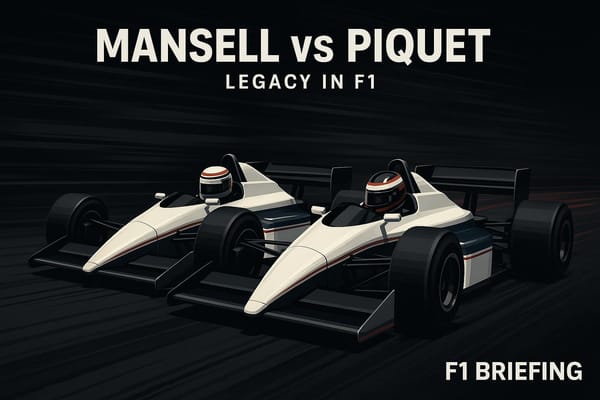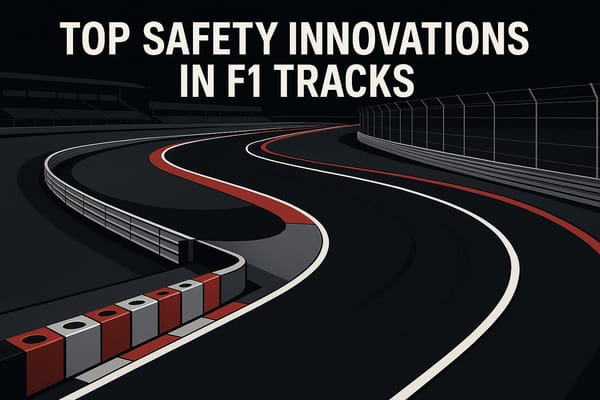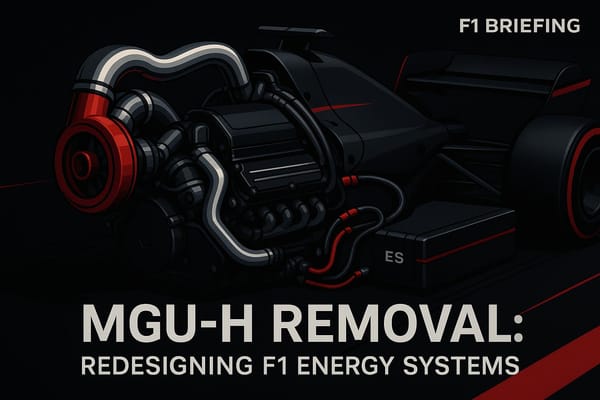F1 Reaction Training Tools
Explore essential tools and techniques that enhance reaction times and decision-making skills for Formula 1 drivers, and their benefits for everyday performance.
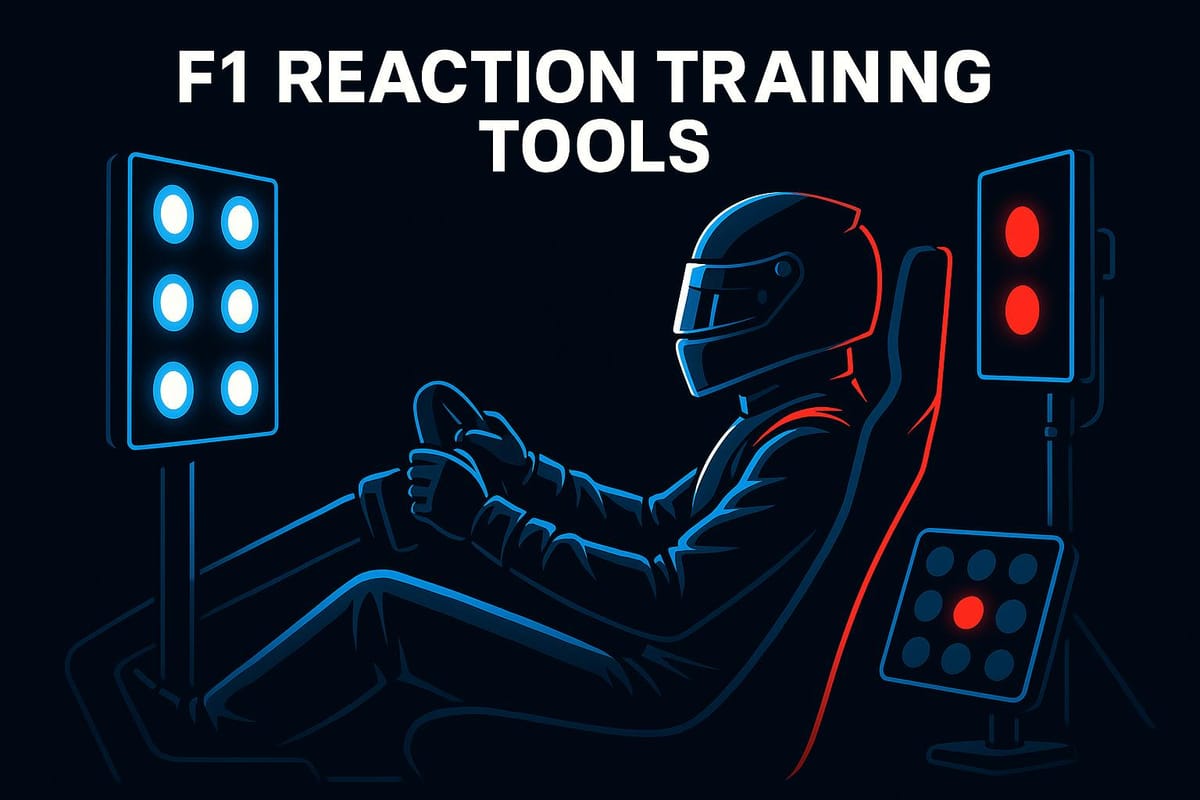
In Formula 1, reaction time can determine the outcome of a race. Drivers face high-pressure conditions, requiring split-second decisions and precise coordination. To prepare, teams rely on specialized tools and exercises designed to sharpen reflexes, improve focus, and enhance decision-making skills. Here’s a breakdown of key training tools used in F1:
- Blazepod Flash Reflex System: Wireless LED pods improve reaction speed, hand-eye coordination, and cognitive processing. Portable and app-connected, it offers customizable drills with data tracking.
- BATAK Reaction Apparatus: A professional-grade system for multi-directional reflex training. It provides accurate timing and session data but is expensive and stationary.
- Reflex Light Systems: Programmable LED lights simulate racing scenarios, tracking reaction times, accuracy, and fatigue. Modular design allows for flexible setups.
- Tennis Ball Drills: A low-cost, simple method to train hand-eye coordination and agility. Requires minimal equipment and is highly portable.
- Performance Coach-Led Training: Personalized programs target physical and mental demands of F1 racing. Coaches use advanced tools to monitor progress but come at a high cost.
Each tool caters to different needs, budgets, and environments, making it essential to choose based on specific training goals. Below is a quick comparison of these options:
F1 legend Jensen Button breaks a Guinness World Record - thanks to his lightning-fast reflexes
Quick Comparison
| Tool | Focus | Data Tracking | Portability | Cost Range |
|---|---|---|---|---|
| Blazepod | Visual reaction, coordination | App-based metrics | High | $200-$400 |
| BATAK | Reflexes, peripheral vision | Built-in session tracking | Low | $3,000-$8,000 |
| Reflex Light Systems | Multi-directional reactions | Advanced analytics | Medium | $1,500-$5,000 |
| Tennis Ball Drills | Hand-eye coordination | Manual timing | Very high | $10-$50 |
| Coach-Led Training | Full physical/mental training | Advanced monitoring tools | Medium | $150-$300/session |
These tools and techniques not only benefit F1 drivers but can also improve reflexes and coordination for anyone, from athletes to individuals looking to boost everyday performance.
1. Blazepod Flash Reflex Training System
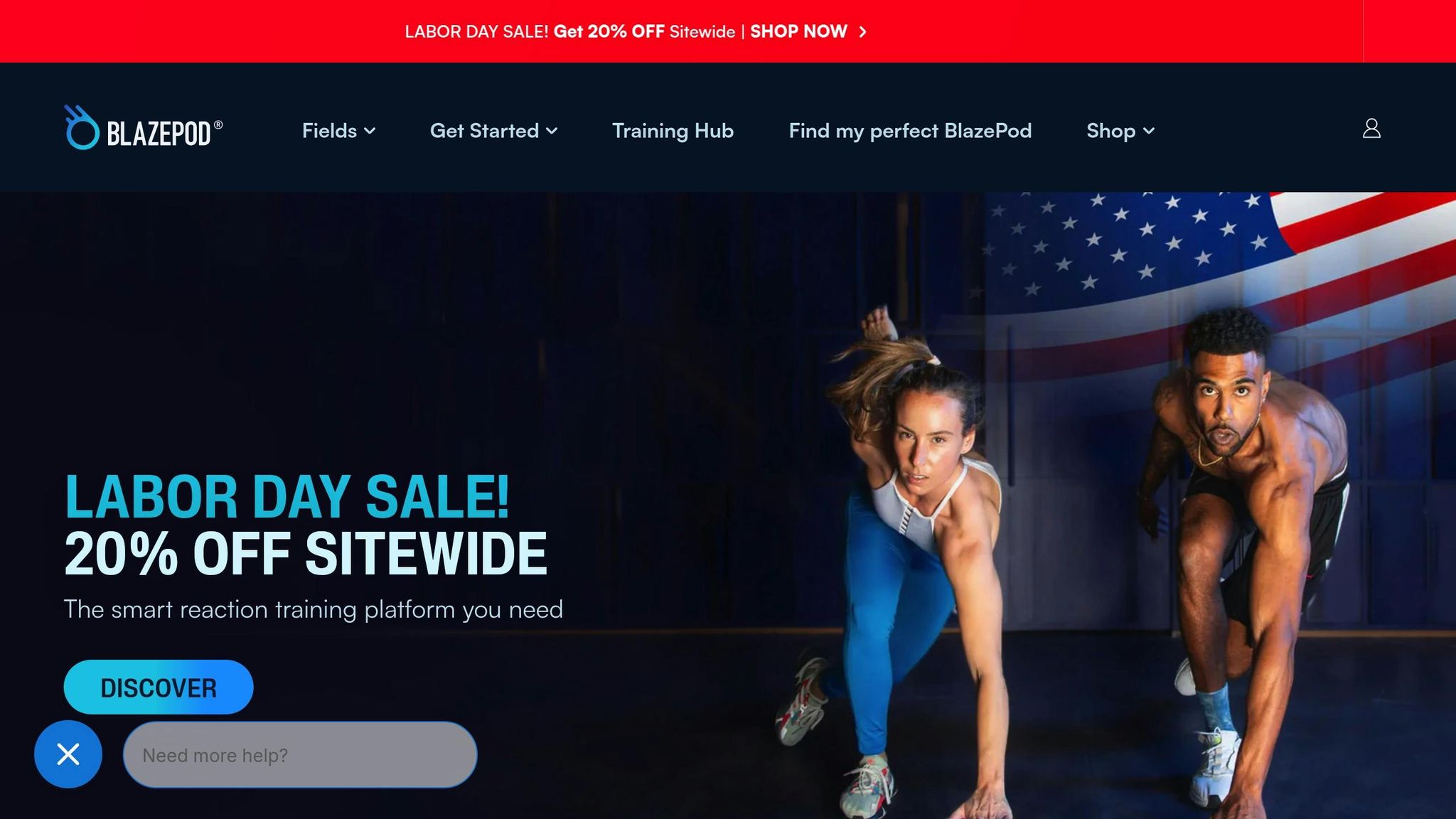
The Blazepod Flash Reflex Training System uses wireless LED pods that light up in random sequences, pushing drivers to react instantly - just like they would during a race. Here's a closer look at how it works, from its training features to its portability and affordability.
These pods connect wirelessly to a central app, giving trainers the freedom to create custom sequences that target specific performance areas. The system is designed to sharpen peripheral vision, hand–eye coordination, and cognitive processing speed, all at once. Many racing teams have adopted this tool because it replicates the split-second decision-making required on the track.
Training Focus
The Blazepod system is all about building reaction skills in multiple directions - essential for drivers who need to process information from their entire field of vision. Unlike drills that focus on just one target, this setup trains drivers to respond to multiple stimuli at the same time.
By placing the pods at varying heights and distances, trainers can design drills that mimic real racing scenarios, like spotting brake markers or navigating corner apexes. This three-dimensional setup enhances drivers' spatial awareness, helping them react quickly to changing conditions on the track.
It also supports cognitive load training, where drivers handle mental tasks while responding to light cues. This mirrors the multitasking nature of racing, where drivers juggle communication, data monitoring, and situational awareness all at once.
Data Tracking and Feedback
The accompanying mobile app records reaction times and accuracy, offering metrics like average reaction time and consistency scores. These insights allow coaches to fine-tune training sessions to meet individual needs.
Portability
The system’s compact, lightweight, and wireless design makes it easy to set up anywhere - perfect for drivers with packed travel schedules.
It comes with magnetic bases and suction cup adapters, so the pods can be mounted on a variety of surfaces. This ensures drivers can keep up with their training, no matter where they are.
Cost and Accessibility
With competitive pricing and a simple smartphone interface, the system allows drivers to train independently while still giving coaches the option to monitor progress remotely.
2. BATAK Reaction Training Apparatus
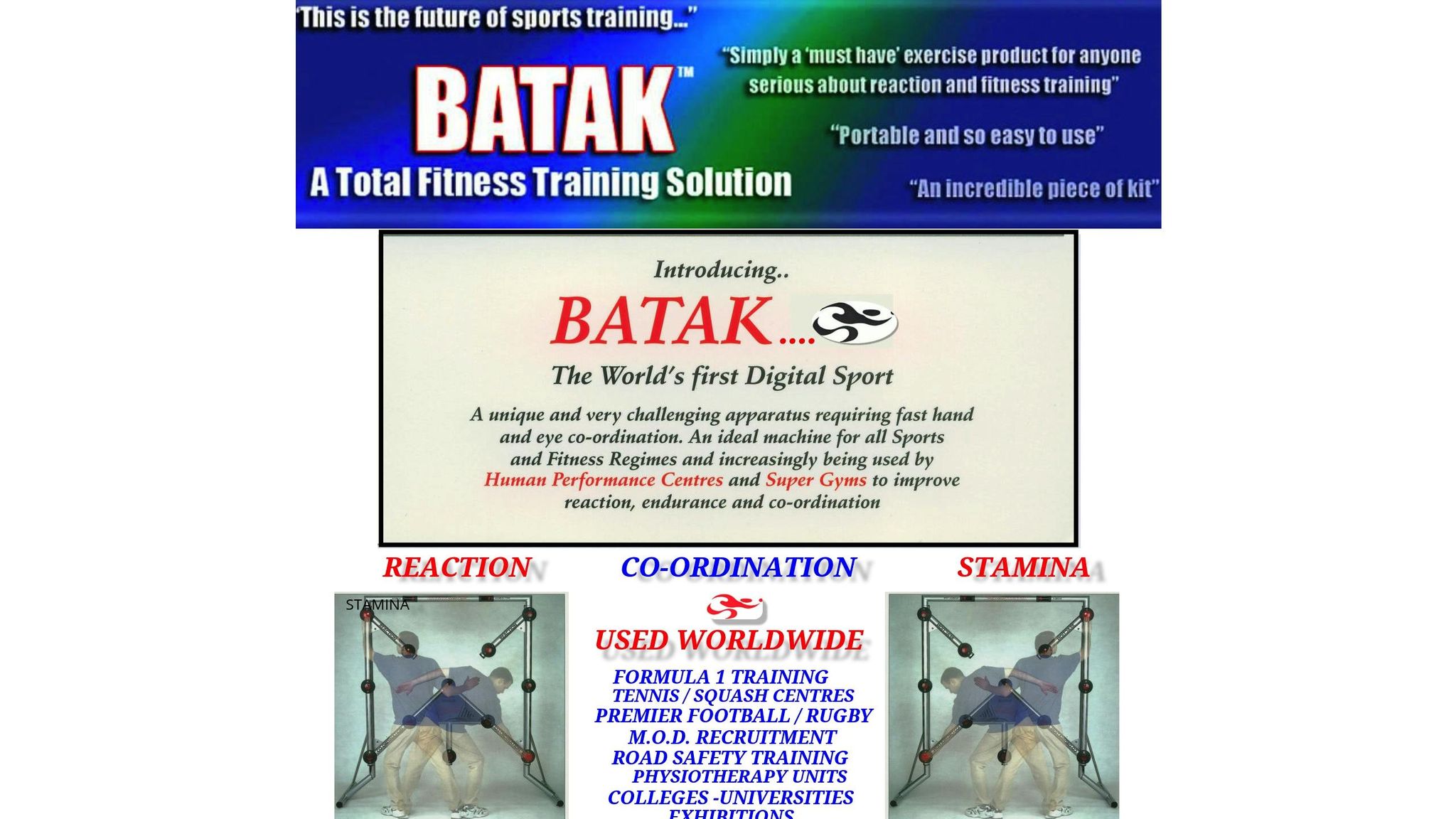
The BATAK Reaction Training Apparatus is all about sharpening reaction times and enhancing quick decision-making. By prompting users to respond to visual cues at lightning speed, it boosts hand-eye coordination - skills that are absolutely essential in the high-pressure world of Formula 1 racing.
Training Focus
This system focuses on improving how quickly users process visual information and coordinate their movements. It’s designed to simulate the split-second reactions and precision needed on the racetrack, helping drivers stay sharp under intense conditions.
Data Tracking and Feedback
Modern BATAK systems come equipped with digital tracking features that monitor reaction times and accuracy. This real-time feedback allows coaches to make adjustments to training plans on the fly, ensuring every session is as effective as possible.
Cost, Accessibility, and Portability
As a professional-grade piece of equipment, the BATAK system requires a considerable financial investment. It’s typically found in training centers, though newer portable mounting options have made it more flexible for different setups.
3. Reflex Light Systems with Data Analytics
Reflex light systems combine programmable LED lights with built-in data analytics, pushing drivers to react to unpredictable visual cues while collecting detailed performance data. This blend of technology and analytics takes reaction training to a whole new level, offering a step up from traditional tools.
Training Focus
These systems are designed to sharpen peripheral vision and multi-directional reaction skills. By activating several lights at once, they force drivers to quickly prioritize and respond to multiple stimuli, mimicking the intense decision-making required in real racing scenarios. It's all about creating a training environment that feels as close to the track as possible.
Data Tracking and Feedback
Modern reflex systems go beyond just reaction times - they track accuracy, consistency, and even signs of fatigue. With real-time feedback, coaches can tweak training sessions on the spot or signal for a break if performance dips. This immediate feedback ensures that drivers stay sharp and avoid developing habits that could hurt their on-track performance.
Cost and Accessibility
Top-tier systems often come with features like cloud-based data storage, advanced analytics dashboards, and compatibility with other platforms. While these systems can be pricey, they provide valuable insights that are especially beneficial for training centers focused on improving reaction times and decision-making speed through data-driven methods.
Portability
The modular design of these systems is a game-changer. Light pods can be mounted on adjustable stands or walls, and wireless connectivity makes setup a breeze. Whether for permanent installations or temporary setups, they can be arranged to replicate the spatial challenges drivers encounter on different racing circuits.
4. Tennis Ball Reflex Drills
Sometimes, the simplest tools can deliver powerful results. Tennis ball reflex drills have become a go-to training method for Formula 1 drivers, offering a straightforward yet effective way to sharpen reaction times and coordination without relying on expensive, high-tech equipment.
Training Focus
These drills zero in on the basics that matter most: hand-eye coordination, agility, and quick lateral movements. By practicing with tennis balls, drivers refine their ability to track moving objects visually, anticipate actions, and make precise, split-second decisions - skills that are critical when navigating high-speed corners or reacting to sudden changes on the track. Additionally, these exercises can help improve grip strength and fine motor control, both of which are essential for maintaining control during intense racing scenarios.
Cost and Accessibility
One of the best things about tennis ball drills is how accessible they are. All you need is a few tennis balls - no fancy equipment or elaborate setups required. Despite their simplicity, these drills are highly effective and are regularly used by top-level athletes, including F1 drivers, as part of their race preparation.
Portability
The portability of tennis ball drills is another major advantage. With nothing more than a few tennis balls and a flat surface, drivers can practice almost anywhere. Whether it's a hotel room, a paddock area, or a quiet corner at the track, these drills can be squeezed into tight schedules with ease. Unlike larger, more complex training equipment, tennis balls require no setup time, making them perfect for quick reflex sessions during race weekends. This portability ensures drivers can stay sharp and ready, no matter where they are.
5. Performance Coach-Led Agility and Reflex Drills
While device-based drills play a key role in F1 training, working with a performance coach adds a whole new level of precision and intensity. These experts craft high-energy, personalized programs that go beyond standard reflex exercises. Their goal? To fine-tune every physical aspect a driver needs to excel on the track.
For instance, F1 drivers face unique physical challenges, like enduring over 6Gs of force and maintaining focus in cockpits that can reach temperatures of 120°F (50°C). Coaches address these demands by creating routines that strengthen the neck, build cardiovascular endurance, and improve overall resilience. They also focus on muscle groups like the posterior chain and core, which are crucial for absorbing the intense braking forces drivers experience. To boost reaction times, coaches often incorporate speed and agility drills, sometimes using tools like Fitlight systems to sharpen both hand and foot coordination.
Another critical area is posture and balance. Coaches conduct biomechanical assessments to identify and correct any imbalances, particularly in the lower back, which can be affected by the uneven forces drivers endure.
Data Tracking and Feedback
One of the key advantages of working with a professional coach is the use of advanced tracking and monitoring tools. Coaches perform detailed assessments to identify weak spots and then develop customized tracking systems to monitor progress. This data-driven approach ensures that training evolves as the driver's needs change, keeping the program both relevant and effective.
Cost and Accessibility
Coach-led training comes with a hefty price tag, making it an option primarily for professional drivers and teams. However, the investment pays off with the level of expertise and individual attention these programs provide. Coaches design exercises that align with racing schedules and can be adapted to any setting - whether it’s a fully equipped gym, a hotel workout room, or a small space at the track.
Portability
Although some drills require specialized equipment, coaches excel at creating flexible routines that work in various environments. This adaptability ensures that drivers can stay consistent with their training, even during the hectic travel schedules of race weekends.
Tool Comparison Table
When selecting a reaction training tool, it's essential to consider your specific needs, budget, and the environment in which you'll be training. Each option comes with unique strengths, tailored to different aspects of F1 driver preparation.
| Tool | Training Focus | Data Tracking | Portability | Cost Range | Key Advantages | Limitations |
|---|---|---|---|---|---|---|
| Blazepod Flash Reflex System | Visual reaction time, hand-eye coordination | Advanced app-based analytics, reaction time measurements | Highly portable, wireless pods | $200-$400 | Easy setup, customizable drills, precise metrics | Limited to visual stimuli, requires smartphone/tablet |
| BATAK Reaction Training Apparatus | Multi-directional reflexes, peripheral vision | Built-in timing system, session data storage | Stationary unit, requires dedicated space | $3,000-$8,000 | Professional-grade accuracy, multiple target zones, proven track record | Expensive, not portable, requires installation |
| Reflex Light Systems with Data Analytics | Cognitive processing speed, decision-making under pressure | Real-time feedback, progress tracking, comparative analysis | Semi-portable, modular setup | $1,500-$5,000 | Comprehensive data analysis, adjustable challenge settings | Complex setup, higher maintenance requirements |
| Tennis Ball Reflex Drills | Hand-eye coordination, unpredictable stimulus response | Manual timing, subjective assessment | Extremely portable, minimal equipment | $10-$50 | Cost-effective, versatile and technology-free exercises | Limited data collection, requires training partner |
| Performance Coach-Led Training | Comprehensive physical conditioning, personalized programs | Advanced tracking tools, biomechanical assessments | Adaptable to any environment | $150-$300 per session | Expert guidance, customized approach | High cost, scheduling constraints, availability limited |
The range of costs varies widely, from budget-friendly tennis ball drills to high-end professional coaching. While tennis ball exercises are accessible and require minimal investment, professional coaching offers a tailored approach for those serious about maximizing performance. Similarly, data tracking capabilities span from basic manual timing to advanced systems that measure reaction speeds down to milliseconds.
Portability is another key factor, especially during race weekends when consistent training routines must be maintained. For example, the Blazepod system stands out for its compact, travel-friendly design, while the BATAK apparatus demands a permanent setup. On the other hand, training focus varies significantly - some tools hone visual reaction speed, while others provide a more holistic approach to reflex development, mimicking the multi-sensory demands of F1 racing.
For professional-level training, the BATAK system and coach-led programs are top choices due to their precision and in-depth methodologies. Meanwhile, amateur racers and simulation drivers often see great results with more affordable and portable options like the Blazepod or tennis ball drills, which can be practiced virtually anywhere.
This breakdown highlights the importance of selecting the right tool to meet your training goals, ensuring that drivers can sharpen their skills and improve precision under competitive conditions.
Conclusion
The reaction training tools discussed in this guide highlight cutting-edge methods that refine driver performance. These systems do more than just measure reaction speed - they help build the neural pathways needed for split-second decisions in high-pressure scenarios.
Interestingly, the benefits of these tools extend far beyond the world of Formula 1. The same techniques that allow elite drivers to handle sudden changes on the track can also enhance everyday reflexes. Whether it’s managing busy traffic, participating in recreational sports, or improving coordination as you age, these methods can make a difference. F1 drivers use a mix of mental and physical exercises to sharpen their reaction times, speed up neural responses, and strengthen the connection between mind and body.
The rise of cognitive performance training devices, like the Reflexion system, is making this type of training more accessible. Once reserved for elite athletes, these tools are now available for home use, offering both professionals and fitness enthusiasts the chance to improve their reflexes.
If you’re looking to incorporate F1-inspired techniques into your routine, starting with a basic drill is a great first step. Simple exercises can mimic the benefits of advanced reaction training methods. Whether you choose to invest in a professional system or stick to straightforward drills, consistent practice that challenges both your mind and body is key to seeing improvement.
At F1 Briefing, we’re dedicated to exploring how advanced training techniques push human performance to new heights. This blend of sophisticated tools and practical exercises shows how precision and speed are developed - not just on the track but in everyday life. These insights into reaction training are just one example of how F1 drivers maximize human potential, offering lessons that can elevate your own performance goals.
FAQs
How do F1 drivers choose the right tools to improve their reaction times?
F1 drivers rely on specialized reaction training tools to hone skills like reaction speed, hand-eye coordination, and spatial awareness. Tools such as reaction lights, neurofeedback devices, and simulators are widely used. These simulators, in particular, mimic race conditions and offer measurable feedback, helping drivers track their progress.
Choosing the right tools is often a collaborative effort involving expert trainers. The selection is highly personalized, ensuring the tools match each driver's specific goals and preferences. This precise approach helps drivers sharpen their reflexes and make split-second decisions - skills that are crucial for success on the track.
What are the key differences in data tracking between BlazePod, BATAK, and Reflex Light Systems?
BlazePod shines with its cutting-edge data tracking and analytics, offering more than 400 customizable activities. Its app-integrated smart light pods provide real-time performance feedback and tailored metrics, making it a go-to option for detailed reaction training.
Reflex Light Systems, on the other hand, focus on sensor-based reaction drills. These systems use touch and motion sensors to enhance reflexes. While some models lack features like proximity sensors or sound integration, they still deliver effective tools with basic data tracking.
BATAK is all about speed and accuracy training. Using sensor-based systems, it measures reaction time and precision during high-intensity drills. However, its analytics are more limited compared to BlazePod.
In summary, BlazePod offers the most detailed data insights, while Reflex and BATAK address specific training needs with simpler tracking options.
Can the reaction training tools used by F1 drivers help improve reflexes and focus in everyday life?
Yes, the reaction training tools used by F1 drivers - like light-based systems and cognitive exercises - aren’t just for elite athletes. They can help anyone looking to sharpen their reflexes, boost focus, and improve decision-making. These tools are specifically designed to enhance peripheral vision, hand-eye coordination, and mental processing speed, skills that are useful in daily life, not just on the racetrack.
Training your brain and body to respond more quickly and efficiently can make a noticeable difference in activities like driving, playing sports, or handling split-second decisions. Whether you’re into fitness or simply want a mental advantage, these tools provide practical benefits that extend well beyond the world of professional sports.

